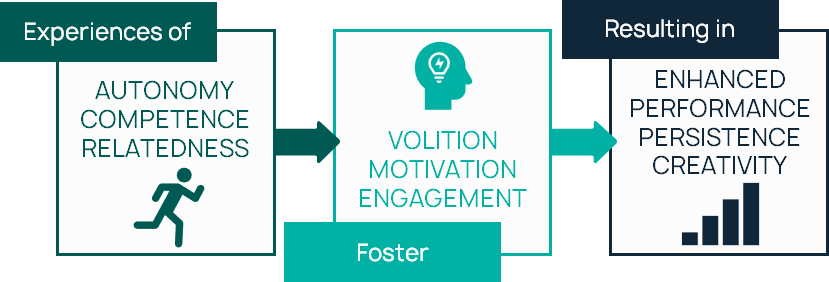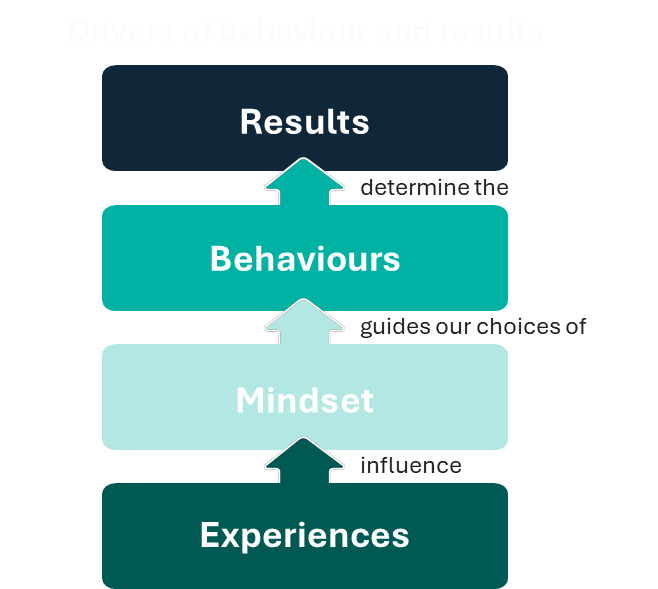The psychology of development plans: two perspectives, one system that works

What if the problem with most development plans is not the goals, but the way we try to achieve them?
Over six months, we ran a simple experiment in marketing leadership: one shared objective (link every campaign and web decision to lead generation and thought leadership), one rhythm (monthly micro-goals), and one rule (embed development in the work, not on top of it). From both the leader and the team member’s seat, what we saw lines up with how people actually build capability.
Two lenses on the same plan

Leader’s view. In our experience, growth sticks when it becomes a system. We treated the brand strategy as the source of truth, set high-level outcomes first, then reverse-planned pages and campaigns. Every meeting opened with a five-minute planner covering what, why, how, and the outcomes that would prove it worked. The monthly cadence felt relentless, yet it made progress visible. Decisions sharpened and stakeholder confidence grew.
Team member’s view. The breakthrough was realising development was not extra work. Each month I chose one small behaviour to apply to live tasks, for example define outcomes before a page build, assess website vendors on lead-driving capability rather than aesthetics, and run the conference brand session end-to-end. Because reviews came quickly, I had to be deliberate. Six months later, capability and confidence had clearly shifted.
Why this worked
Progress fuels motivation. According to Teresa Amabile and Steven Kramer, small wins in meaningful work lift energy and creativity. Monthly micro-goals made progress tangible and momentum natural.
Deliberate practice inside real work. Research popularised by Anders Ericsson shows capability jumps when practice is conscious, focused and feedback rich. Reverse-planning and the five-minute opener turned everyday tasks into deliberate practice, not extra projects.
Plans that specify when, where and how get done. Peter Gollwitzer’s work on implementation intentions shows if-then plans increase follow-through. The monthly review created that cue-to-action loop.
Identity makes skills stick. Self-determination theory from Edward Deci and Richard Ryan highlights autonomy, competence and relatedness as the engine of lasting motivation. By the end, the team member did not just have new techniques. They saw themselves as someone who leads complex decisions and earns trust.

What we actually did (you can copy this tomorrow)
-
Start with outcomes, then design backwards. Treat strategy as the brief. Decide the commercial outcome first, then reverse-plan the page or campaign.
-
Use a five-minute meeting opener. Clarify what, why, how and the evidence of success. Capture decisions on the spot.
>> Behaviours in action: open every meeting with the four questions, record outcomes before closing. -
Pick one micro-goal per month. Make it a micro-behaviour that is observable, repeatable, 100% in the person’s control and predictive of the result you want. Review monthly and reset quickly.
>> Mindset in action: I am here to improve the quality of my work this month, not to add more work. -
Keep the operating rhythm simple. YakTrak says teams move faster when leaders anchor to focus, frequency and quality. Focus on the most important behaviour, keep the cadence tight, and check the quality of application with concrete evidence.
-
Contact centre example: Apply the five-minute planner to daily huddles to link today’s CSAT and FCR targets to one micro-behaviour for the shift, for example “summarise the customer’s request before offering options.” Review outcomes in tomorrow’s huddle.
Outcomes (proof, not hype)
-
Sharper decisions and execution. Objectives were clarified first and revisited often, improving page builds and campaign calls.
Results: better alignment to lead generation and authority goals. -
Visible leadership. Running the conference brand session and owning vendor selection built presence and credibility.
Results: stronger influence and faster consensus. -
Greater stakeholder confidence. Consistent planning hygiene and capability-based criteria replaced aesthetics in vendor choices.
Results: clearer commercial logic and higher trust in decisions.
YakTrak says teams see success when leaders pair operating rhythms with clear micro-behaviours. It shortens the path from intent to impact and creates
Pitfalls to avoid
- Treating development as a side project. If it sits outside real work, it will lose to real priorities. Embed it
- Setting goals you cannot observe. Be specific about what you will see and hear.
- Stretching the cadence too far. Quarterly is too slow for behaviour change. Monthly is a sweet spot, go fortnightly when stakes are high.
Using GRIST’s psychology of performance (experience → mindset → behaviours → results)
- Experience: a monthly operating rhythm, set, apply, review, reset, with meetings that start on outcomes.
- Mindset: ownership of growth, development is how I do the work, not extra tasks.
Mindset in action: choose capability-based vendor criteria and seek evidence over opinion. - Behaviours: reverse-planning, five-minute opener, one observable micro-goal each month.
Behaviours in action: define outcomes before any page build, capture decisions and evidence in meeting. - Results: sharper decisions, visible leadership, stronger commercial impact. Improved lead-driving capability and decision quality.

The bottom line
Development plans do not fail because people do not care. They fail because they live outside the work. Put them back inside, outcomes first, one micro-goal at a time, tight review rhythm, and you create capability that compounds. The change is not just in performance metrics. It is in identity and confidence. That is a pathway to excellence that lasts.